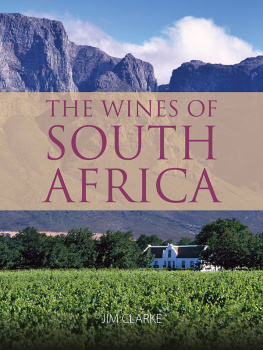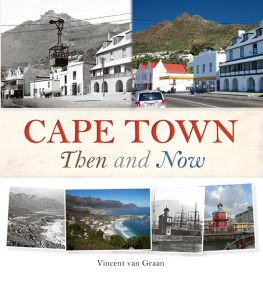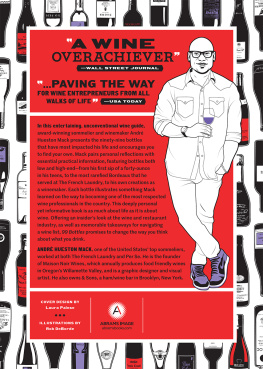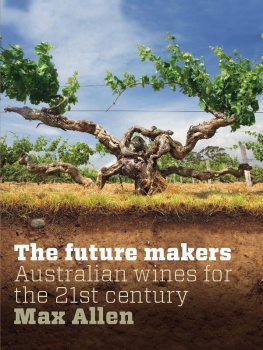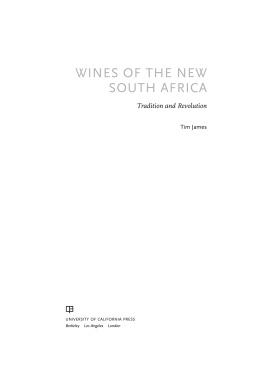

Acknowledgements
With thanks to the winemakers who opened their homes and hearths; and agreed to cook! And to my son Ben Bristow (12), for his tolerance and support throughout the year it took to produce this book.
All dishes were photographed freshly prepared (and often plated) by the winemakers in their own kitchens, and feature their own crockery, cutlery and accoutrements.
Published in 2012 by Struik Lifestyle
(an imprint of Random House Struik (Pty) Ltd)
Company Reg. No 1966/003153/07
Wembley Square, 1st Floor, Solan Street, Gardens 8001
P O Box 1144, Cape Town 8000
Copyright in published edition: Random House Struik 2012
Copyright in text: Wendy Toerien 2012
Copyright in photographs: Cape Winemakers Guild 2012
Visit www.randomstruik.co.za and subscribe to our newsletter for monthly updates and news.
All rights reserved. No part of this publication may be reproduced, stored in a retrieval system or transmitted in any form or by any means, electronic, mechanical, photocopying, recording or otherwise, without the prior written permission of the copyright owner/s.
PUBLISHER: Linda de Villiers
MANAGING EDITOR: Cecilia Barfield
EDITOR: Joy Clack
DESIGNER: Beverley Dodd
PHOTOGRAPHER: Mike Carelse
FOOD STYLIST: Claire Gritten
PROOFREADER: Bronwen Leak
INDEXER: Cecilia Barfield
ISBN 978 1 43170 033 2 (Print)
ISBN 978 1 43230 140 8 (ePub)
ISBN 978 1 43230 141 5 (PDF)
Contents
The First Decade
19821992
On the evening of 24 August 1982 a small group of Cape winemakers gathered at the home of Billy Hofmeyr, on his Klapmuts wine farm Welgemeend between Paarl and Stellenbosch, to officially found the Cape Independent Winemakers Guild.
The name reflected their raison dtre, a guild being the age-old and time-honoured concept of an association formed by merchants or craftsmen to maintain standards of quality in production and provide mutual support. It also illustrated their intent to represent the then few independent winemakers in South Africa, as opposed to the many employed by grape grower-owned co-operatives and corporate producing wholesalers.
It was a time when the latter, directly or indirectly invested with statutory regulatory powers, dominated the industry; when the Cape winelands was producing large volumes of predominantly white wine of a mediocre quality; when economic sanctions against an undemocratic South Africa curtailed international travel, trade and competition, integral to growth and development.
This independent group was made up of individuals who (whether or not they owned their vineyard and cellar) had all-round, hands-on responsibility and control over their wine production: which varieties they grew; how their vineyards were managed; what wine they made; how they made it, marketed it and sold it. Operating in an environment that stifled progress, ambition, enthusiasm and creativity, they were keen to explore what could be achieved to improve the quality and develop a classicism and uniqueness in style of, not only their own wines, but Cape wine in general, through the introduction of new varieties and winemaking methods.
FATHER OF THE GUILD
It was Billy who first came up with the idea of the Guild, remarks founding member Walter Finlayson.
Born in Stellenbosch, a graduate of the University of Cape Town in 1949 and a land surveyor by profession, Hofmeyr lived out a life-long passion for wine on Welgemeend. He and wife Ursula bought the farm in 1974, replanted it to noble Bordeaux varieties cabernet sauvignon, cabernet franc, merlot and malbec, and introduced their first reds in 1979. Billy was a self-taught winemaker, but a classic traditionalist, vinifying his wines in a cellar equipped on a shoestring budget, but investing in expensive, small French oak barrels for maturation to enhance quality.
He was also a member of the Wine Tasters Guild of South Africa from 1967; the winner of the inaugural Cape Argus newspaper SA Wine Taster of the Year competition in 1973; the founding chairman of the Stellenbosch Wine Circle in 1974; and a contributor to Die Wynboer (the specialist dual technical and consumer publication of its day) from 1974 to 1979.
Once the Guild was formed, Professor Jol van Wyk was invited as a patron. Having studied at the University of California, Davis in 1965 and been appointed to head up the oenology department at Stellenbosch University in 1969, he brought a more serious educational aspect to the Guilds monthly tastings, held at Blaauwklippen wine estate in Stellenbosch.
Founding member Etienne le Riche recalls: This was a good group of people who met for support and discussion; the tastings always had a technical angle and everything was centred on quality. It helped to get together to discuss issues, identify problems and try and bring them up in the industry to encourage change and development in areas we felt needed it, whether it was the finer aspects of the newly introduced Wine of Origin Superior rating system of quality and provenance; the importing of new varieties and vine stock; or the prevalence of young wine shows instead of bottled wine shows.
WINE AS ART
It was through Hofmeyrs interest in the arts and his friendship with South African fine art expert Stephan Welz, a director of Sothebys International auction house, that the Guild was approached to put up a selection of their experimental wines for public sale to connoisseurs, collectors and wine lovers.
The first Cape Independent Winemakers Guild Auction of Rare Cape Wines was held on 7 September 1985 in the Rosebank Hotel in Johannesburg. Wielding the gavel was English auctioneer and Master of Wine David Molyneux-Berry of Sothebys in London.
The offerings were to be kept commercially exclusive to the event and were either chosen from the winemakers cellar (be it a single barrel or particular blend) or were especially made for the auction.
Despite having started as essentially a red wine group, particularly intent on exploring the then new concept of Bordeaux blends in the Cape, the winemakers were also applying their expertise to classic whites and other styles of wine. Among the items on auction were two chardonnays, a riesling and a wood-matured sweet white wine.
The highest price paid on the day for a case was R180 [roughly $24] (for Walter Finlaysons Blaauwklippen Cabernet Sauvignon Reserve 1982).
The hard work involved in preparing for the auctions was done by the winemakers themselves, which included personally presenting pre-sale public tastings in Cape Town, Durban and Johannesburg (later in Bloemfontein and Pretoria too) during the week preceding the auction. Serious stuff; but the early members also recall the fun and close family-like ties developed among one another. Welz hosted a dinner for all at his house in auction week. And there was plenty of golf played.
The commercial success of that first auction came as an unexpected but pleasant surprise. Early members re-iterate that the Guild was never intended to have a financially lucrative function and that the auction was always seen as secondary to the primary objective of the Guild as essentially a study group for the furtherance of the Cape wine industry as a quality wine-producing region: building brand South Africa.
Next page

